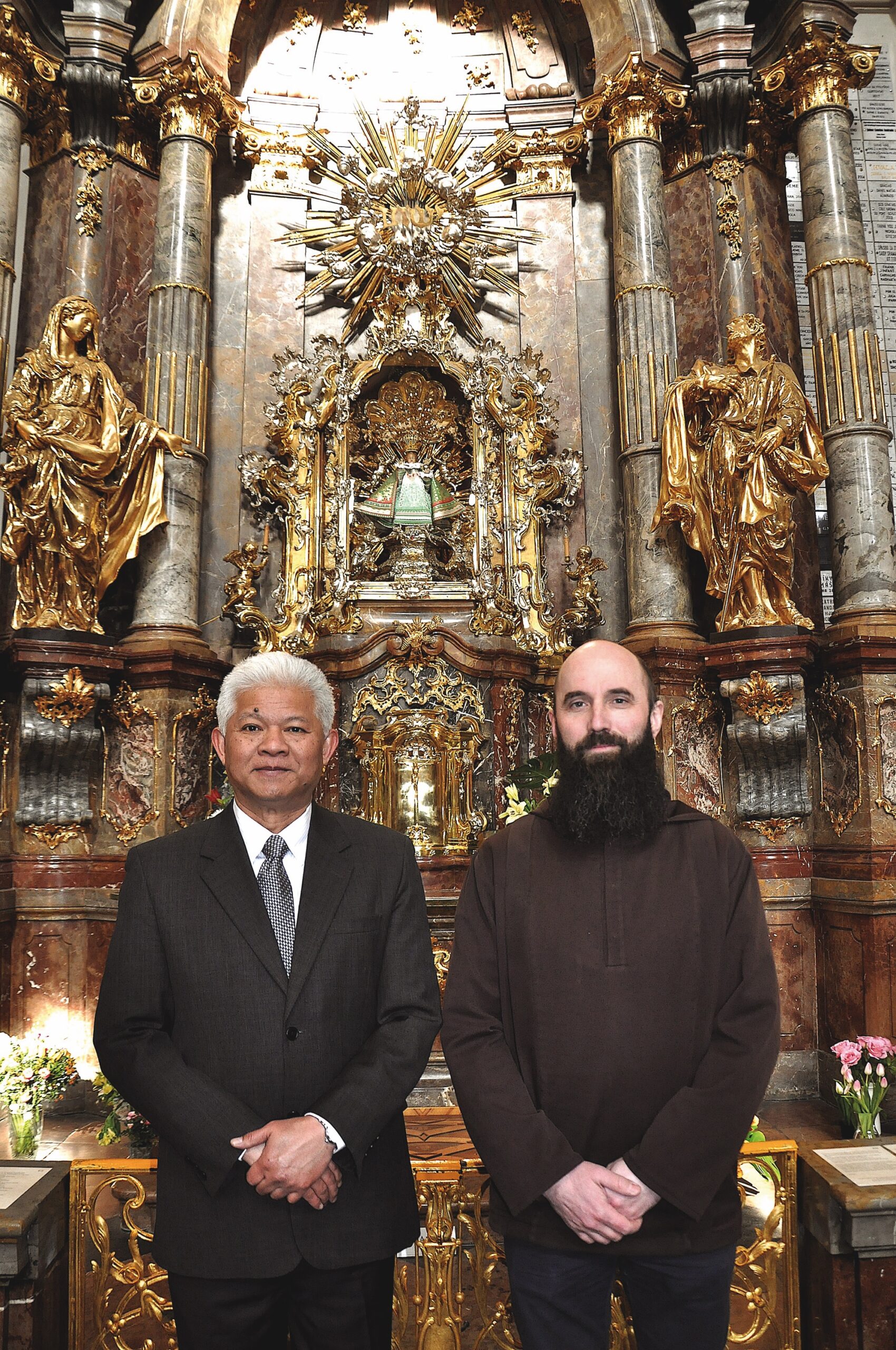
H.E. Mr. Suwat Kaewsook, Ambassador of Thailand to the Czech Republic and Father Pavel Pola, Rector of the Church of Our Lady Victorious
Text: Martina Hošková and M. Zisso; Photo: Archive
The Infant Jesus of Prague, or Pražské Jezulátko in Czech, is an over 400-years old wax-coated wooden statue of Spanish origin located in the Church of Our Lady Victorious in Malá Strana, Prague. The legends claim that the statue once belonged to St. Teresa of Ávila, and was consequently donated to the Carmelite friars by Princess Polyxena of Lobkowicz in 1628, together with her advice to “Hold this image in high regard and you shall prosper.” The statue of the Infant Jesus receives visitors from all over the world every day. Most of its robes are gifts of gratitude, with the newest beautiful set coming from far-away Thailand.
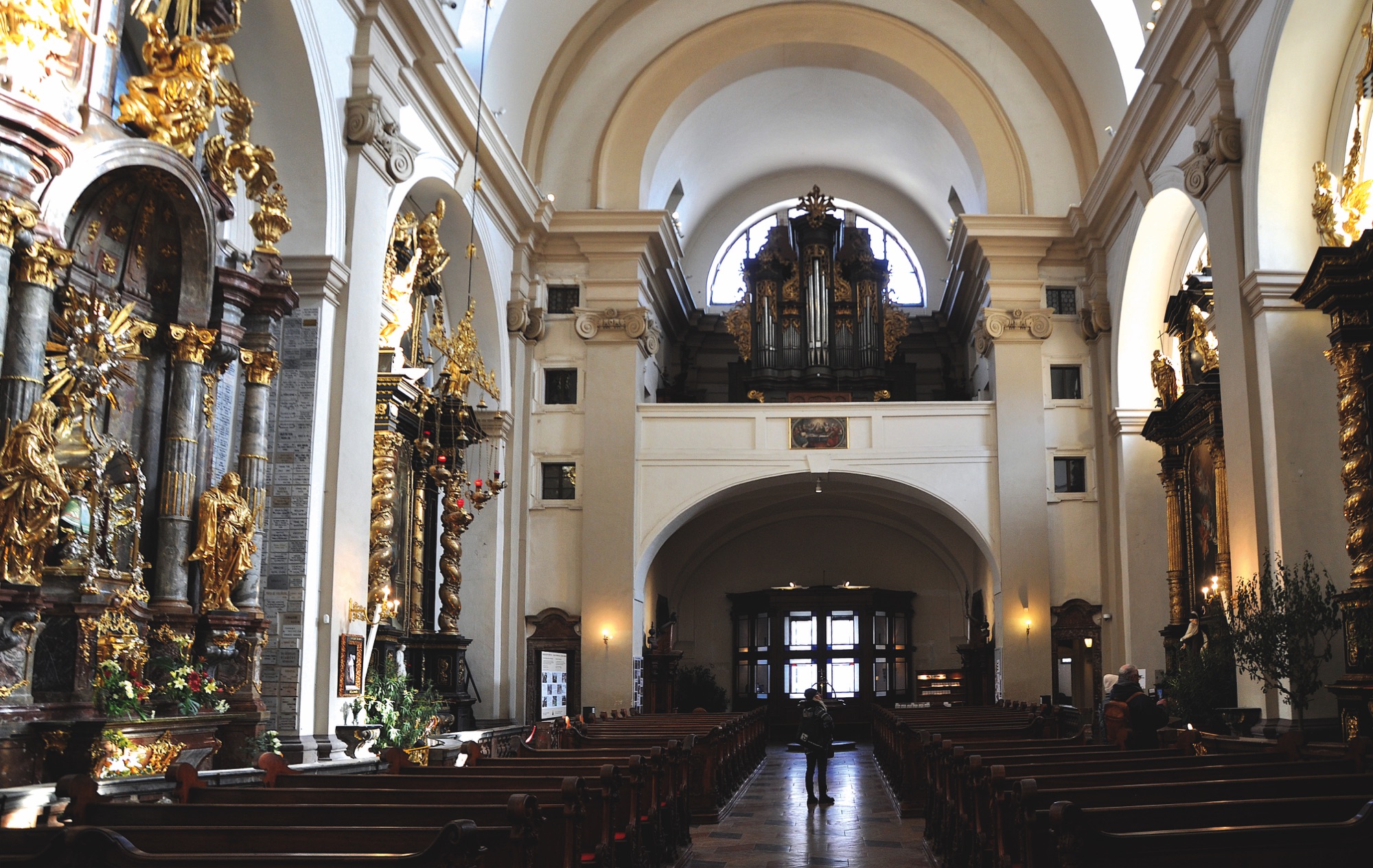
Prague – the home of the Infant Jesus
With the Church of Our Lady Victorious housing the Infant Jesus statue and offering regular mass in Czech, Spanish, Italian, English, and German, Prague is one of the major pilgrimage centres in Central Europe.
The Feast of the Infant Jesus of Prague celebrates the mystery of the incarnation and is observed on the 14th January. Each year, on the first Sunday of May, a coronation feast and 45-minute public procession with a copy of the statue takes place amid a sea of devotees and tourists. The first procession, initiated by the Earls of Martinice, took place in 1651, with the statue of the Infant Jesus travelling from one Prague church to another. The newest crown was donated by Pope Benedict XVI during his visit to Prague in 2009.
The devotional worship of the Infant Jesus of Prague has a long tradition that is not limited to Prague. Initially, veneration was spread by the Carmelite order. A copy of the gracious statue had travelled to almost every monastery. During the 18th century, it expanded to churches in Central Europe, and in the late 19th and early 20th centuries, as plaster and metal moulding became more affordable, statues of the Infant of Prague spread rapidly into the homes of modern Europe, and all over the world.
This spread of veneration also has its strongest roots in Spain, from where the Infant Jesus originates. The Spanish and Portuguese travelled with pictures and statues of the Infant Jesus across the Atlantic Ocean to the colonial countries in South America. Thanks to missionaries and European immigrants, the Infant Jesus is known in India, China, the Philippines, and North America. Today, it is venerated most in Spanish-speaking countries and churches modelled on the Prague church can be found elsewhere, including in Africa, where the devotees sing, dance, preach, and shout. The faithful believe that Jesus has the power to give favours to those who pray to the Infant of Prague, and sometimes the statue comes with the quotation “The more you honour me, the more I will bless you.”
In Ireland, for example, the statue is very popular and is called “Child of Prague”. A wedding gift of a statue of the Child of Prague is particularly auspicious. Irish brides hoping for good luck and good weather on their wedding day ritually place a copy of the statue outside their homes. Devotion to the Child of Prague and belief in its power to influence the weather is still strong in many parts of Ireland. It is also common to see the Child of Prague displayed in the window of houses in some of the older parts of Dublin, and the practice of putting it out in the hedge or burying it in the garden as a solicitation for good weather is widespread in areas as far apart as Cork, Dublin, Sligo, and the county of Leitrim.
Once every four years, two wooden statues of Infant Jesus made in Prague are sent to various catholic churches around the world. The Prague church also has a dedicated service that ships copies of the statue, cards, religious souvenirs, and other items to catholic devotees worldwide every week.
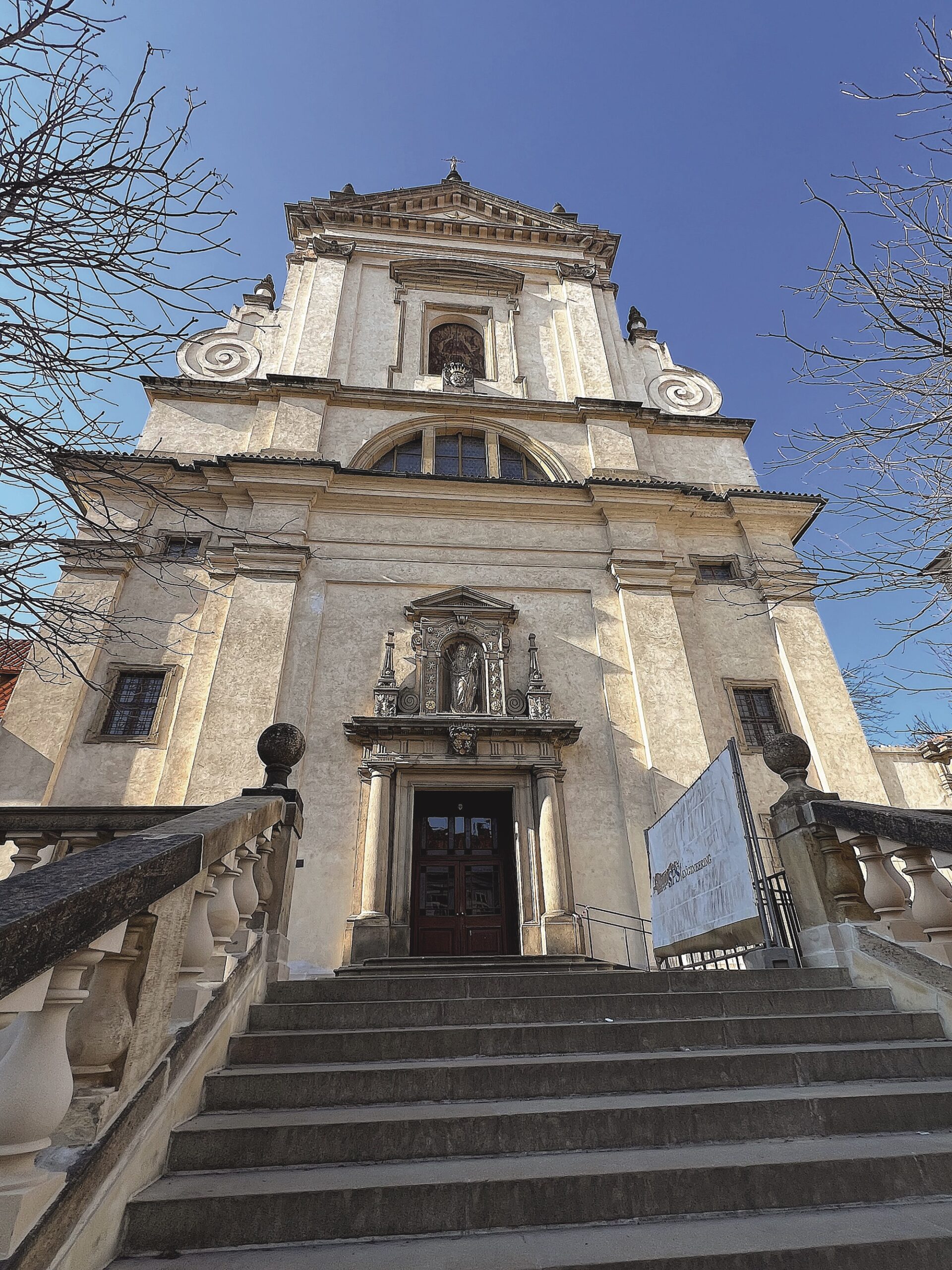
Pieces of clothing reveal both fragility and omnipotence
In the church where the original is housed, it is ritually cared for, cleaned, and dressed by the Carmelite sisters of the Church, who change the Infant Jesus’ clothing to one of the approximately one hundred costumes donated by the faithful as gifts of devotion. The statue has a dedicated robe for each part of the ecclesiastical calendar.
The Carmelite sisters of the Child Jesus dress the Infant Jesus in royal garments, the liturgical colour of which alternates according to the seasons of the church year and other church celebrations and feasts. Generally, four basic colours are used.
White: the colour of glory, purity, and holiness – for celebrations, Christmas, and Easter
Red: the colour of blood and fire – for Holy Week, Pentecost, and Feasts of the Holy Cross
Purple: the colour of penance – for Lent and Advent Green: the colour of life and hope – for ordinary time
The white alb and royal attire remind us on one hand of the helplessness of the Divine Child, and on the other hand, of Jesus’ royal title and divine omnipotence.
The statue is a 19 inch (48 cm) representation of the Infant Jesus, carved out of wood, which is covered with linen, with its surface modelled in coloured wax. The surface of the wax is quite fragile. In order to protect the fragile wax surface, the bottom half below the waist is enclosed in a silver case.
Since 1788, the statue’s raised two fingers have worn two rings, as a thanksgiving gift by a noble Czech family for healing their daughter. Some earlier records indicate that the original wig was possibly white.
Several costly embroidered vestments have been donated by benefactors. Among those donated are those from Empress Maria Theresa and Emperor Ferdinand I of Austria, which are preserved to this day. A notable garment in the collection is an ermine cloak placed on the statue during the first Sunday after Easter, which is the anniversary day of the coronation of the statue by the Archbishop of Prague Ernst Adalbert von Harrach on 4th April 1655.
Other valuable garments worn by the image are vestments studded with various gemstones or embroidered with gold, and silk fabrics – as well as handmade lace customized purposely for the statue.
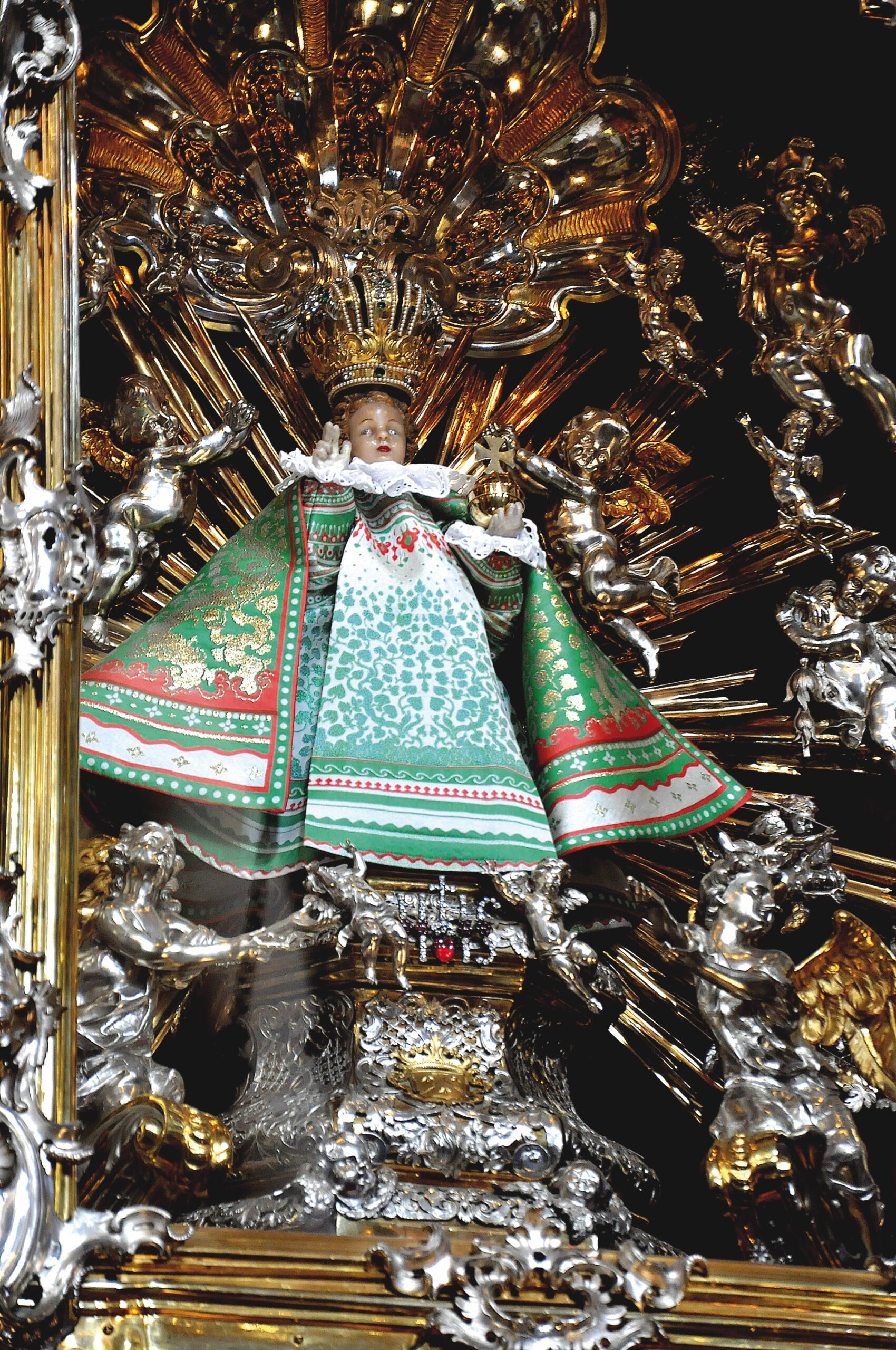
The Infant Jesus of Prague dressed in the robes from Thailand
New robes presented by Thailand
From 17th January until 4th March 2025, the Infant Jesus of Prague will be dressed in robes made in Thailand. “It is a great honour that the Church of Our Lady Victorious in Prague has accepted dressing the Thai robes on the statue of the Infant Jesus of Prague,” said Ambassador of Thailand H.E. Mr. Suwat Kaewsook.
The robes were co-designed by the Faculties of Textile Engineering of the Rajamangala University of Technology Thanyaburi (RMUTT) and the Technical University of Liberec (TUL).
The robes were made by the PASAYA Company, one of Thailand’s leading manufacturers in home textile industry and an expert in textile art, with its digital Jacquard weaving loom. The under-gown sets were made by the Gemma Knit Company, a renowned Thai manufacturer in the lace and sportswear industry.
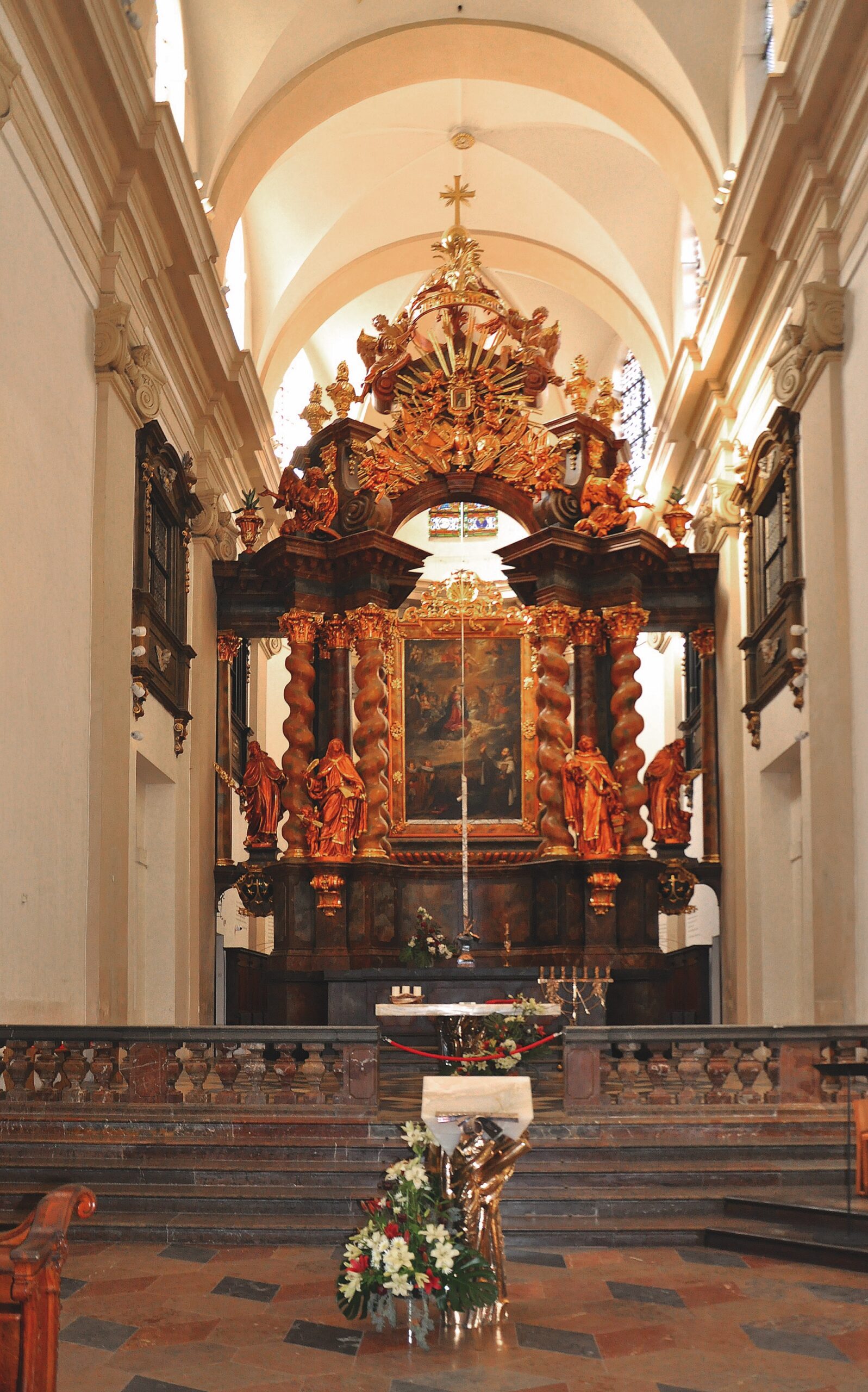
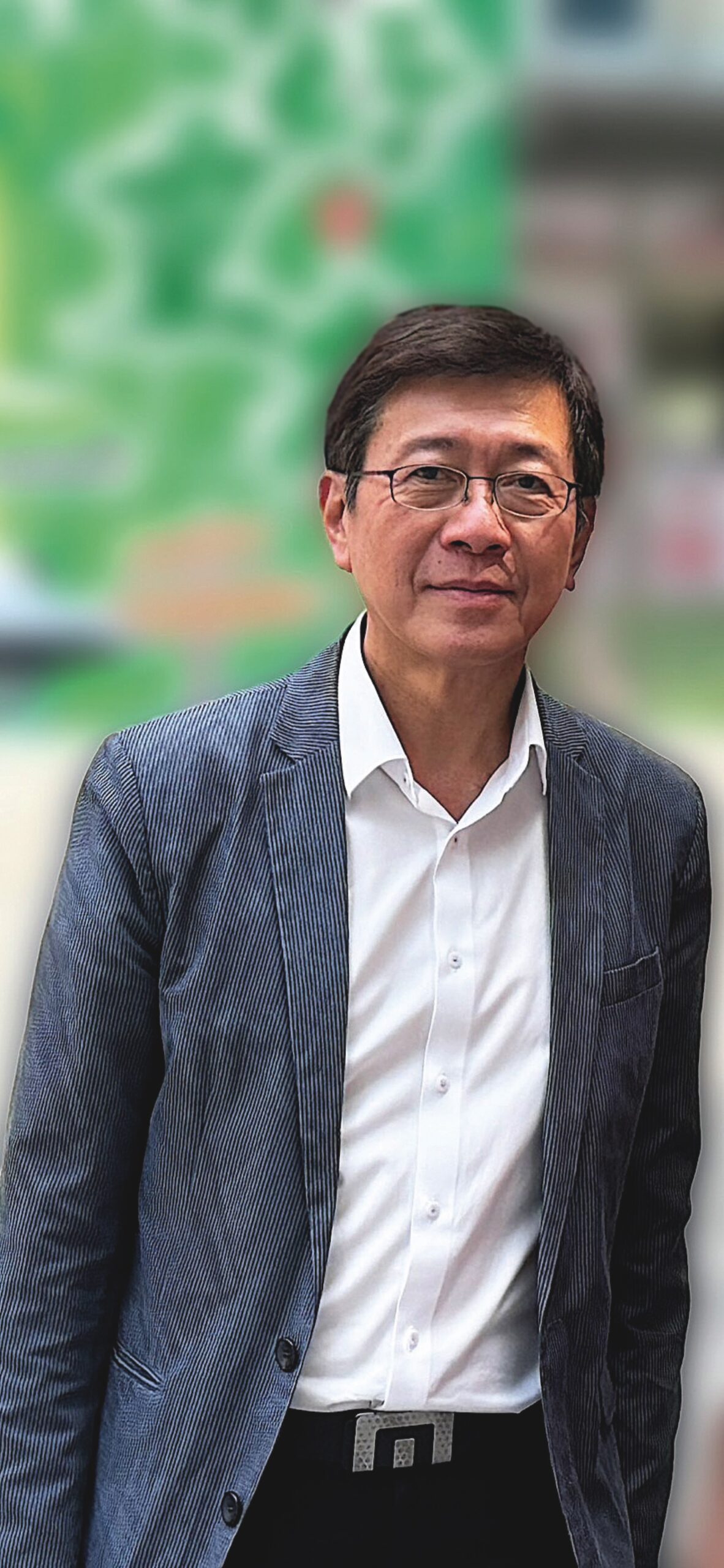
Mr. Schle Woodthanan, Managing Director
and Owner of PASAYA GROUP
Apart from the robes presented to the Church of Our Lady Victorious, a total of three sets of robes were also prepared as gifts. These were given to the Faculties of Textile Engineering at both RMUTT and TUL, as well as to the Embassy of the Czech Republic in Bangkok. Another two sets of robes were kept at the PASAYA Company.
In addition to the robes made especially for the Infant Jesus of Prague, the Thai side also presented the church with six sets of gowns made for their priests.
“We have a Christian community of around 800,000 people in Thailand. From now on, I wish the bond of friendship between our two countries will be further strengthened through the people-to-people relations”, said H.E. Mr. Suwat Kaewsook.
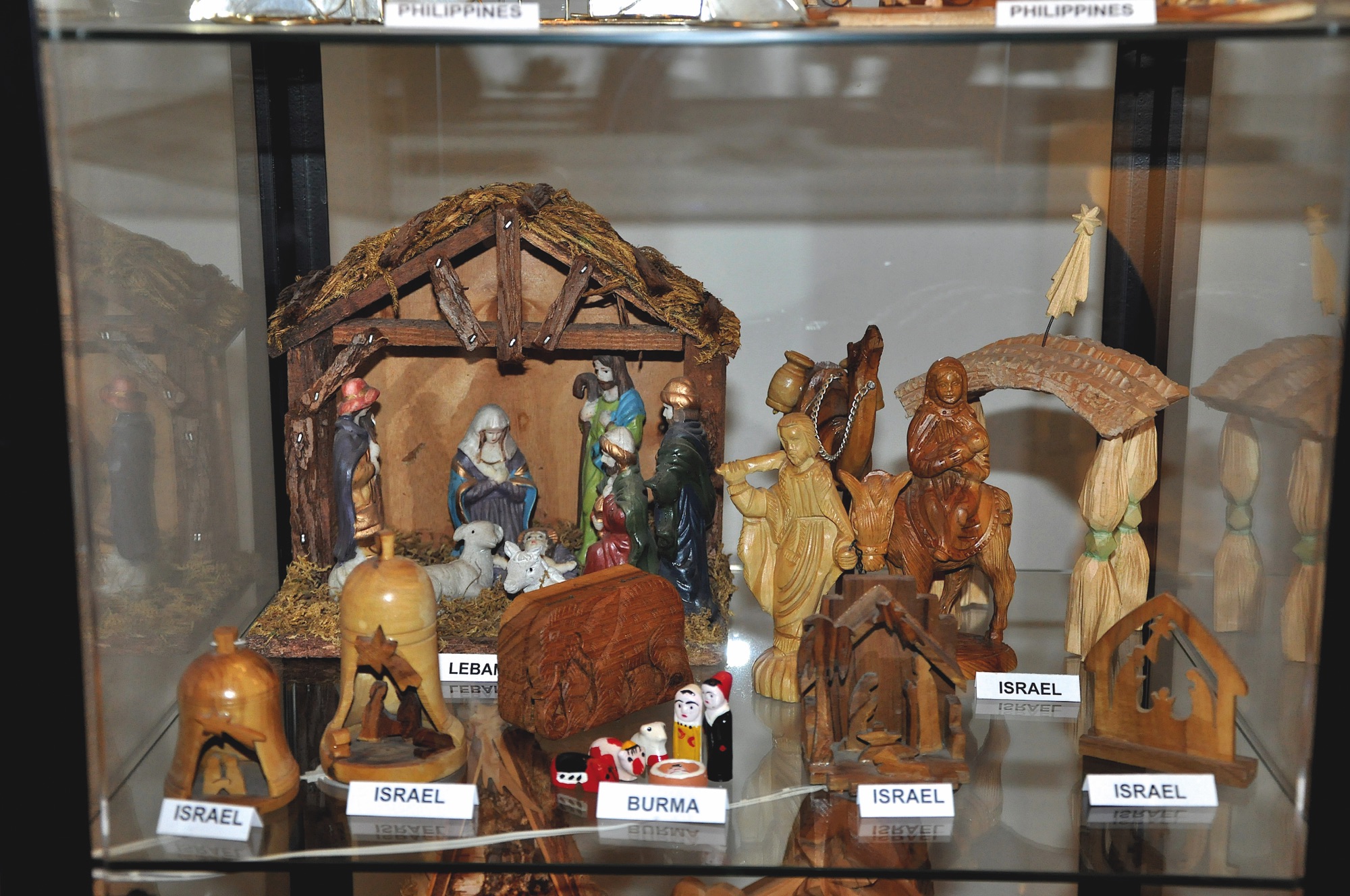
The project was made possible thanks to:
- H.E Mr. Suwat Kaewsook, Ambassador of Thailand to the Czech Republic
- Father Pavel Pola, Rector of the Church of Our Lady Victorious
- Mr. Schle Woodthanan, CEO of PASAYA GROUP
- doc. RNDr. Miroslav Brzezina, CSc., dr.h.c, Rector of TUL
- Associate Professor Dr. Sommai Pivsa-Art, Rector of RMUTT
The Spanish origin of the Infant Jesus statue
According to sources, the statue of the Prague Infant Jesus originates in Spain. It was probably made in Spain sometime in the second half of the 16th century or earlier. A legend says that the Infant Jesus miraculously appeared to the monk in a desolated monastery somewhere between Córdoba and Seville, and he moulded the statue based on his vision. A different legend tells us that the statue was owned by Saint Teresa of Jesus, who greatly venerated Jesus’ childhood and spread the veneration of the Infant Jesus throughout Spain.
Many other Infant Jesus sculptures were also carved by famous masters throughout Europe in the Middle Ages. The exact origin of the Infant Jesus statue phenomenon is not known, but historical sources point to a 19 inch (48 cm) sculpture of the Holy Child with a bird in his right hand currently located in the Cistercian monastery of Santa María de la Valbonna in Asturias, Spain, which was carved around the year 1340.
The House of Habsburg began ruling the Kingdom of Bohemia in 1526, and the kingdom developed close ties with Spain. The statue of the Prague Infant Jesus first appeared in 1556, when María Maximiliana Manriquez de Lara y Mendoza brought the image to Bohemia upon her marriage to Czech nobleman Vratislav II of Pernštejn. An old legend in the Lobkowicz family reports that María’s mother, Doña Isabella, had been given the statue by Teresa of Ávila herself. María received the family heirloom as a wedding present. In 1587, she gave it to her daughter, Polyxena of Lobkowicz as a wedding present.
In 1628, Princess Polyxena von Lobkowicz donated the statue to the impoverished Discalced Carmelite friars. Upon presenting it, Princess Polyxena is reported to have said: “Venerable Fathers, I bring you my dearest possession. Honour this image and you shall never be poor.”
The Church of Our Lady Victorious
The church is located in Malá Strana, Prague, and has extraordinary significance not only for its architecture and artistic decoration but mainly for the fact that the famous statue of the Prague Infant Jesus is kept and venerated within.
The church is built partly in the Renaissance style, and partly in the Baroque style. On 21st July 1613, the church was consecrated to the Holy Spirit. The name of the architect is not recorded; however, it is presumed it was the court architect to Emperor Rudolf II, Giovanni Maria Filippy, of Italian origin. Today’s appearance of the church dates back to a reconstruction in 1636-1644. A large monastery for the Discalced Carmelites (today the office of the Ministry of Education, Youth, and Sports) was attached to the church in the South. A tower was built in 1669.
On 8th September 1624, the church was consecrated to Our Lady Victorious as a thank-you for the victory of the imperial pro-catholic part in the Czech lands. The Discalced Carmelites furnished the church with altars made by the best available artists of the 17th and 18th centuries. The statue of the Infant Jesus of Prague was permanently placed in the church at this time.
Disturbances in Bohemia due to the Thirty Years’ War brought an end to the special devotions, and on 15th November 1631, the army of King Gustavus Adolphus of Sweden took possession of Bohemia’s capital city. The Carmelite friary was plundered, and the image of the Infant of Prague was thrown into a pile of rubbish behind the altar. Here it lay forgotten for seven years, its hands broken off, until in 1637 it was found again by Father Cyrillus and placed in the church’s oratory. One day, while praying before the statue, Cyrillus claimed to have heard a voice say, “Have pity on me, and I will have pity on you. Give me my hands, and I will give you peace. The more you honour me, the more I will bless you.” Eventually, Father Cyril was able to have new arms made for the Infant Jesus.
The statue has remained in Prague. However, by decree of Emperor Joseph II, the monastery was dissolved in 1784, and the Carmelites were forced to leave. At the request of the Prague Archbishop Miloslav Vlk, the Discalced Carmelites returned to the church after two hundred years on 2nd July 1993. Since that time, this pilgrimage place, loved by people of many nationalities, has been revived.

